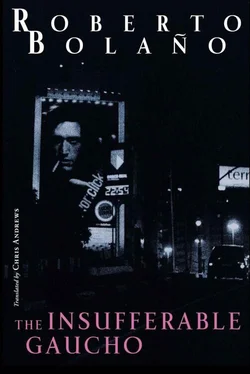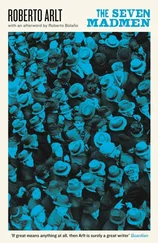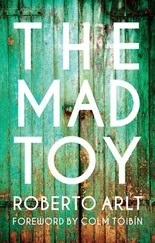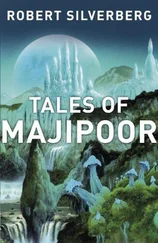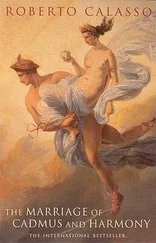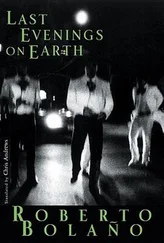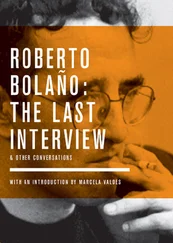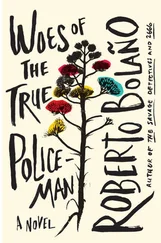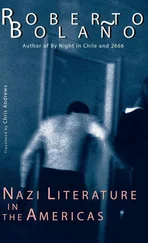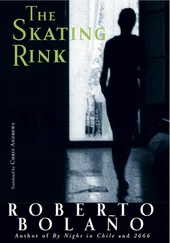Illness and Travel
Traveling makes you ill. In the old days, doctors used to recommend travel, especially for patients suffering from nervous illnesses. The patients, who were generally wealthy, complied and set off on long trips that lasted months and sometimes years. Poor people who had nervous illnesses didn’t get to travel. Some, presumably, went crazy. But the traveling patients also went crazy, or, worse still, acquired new illnesses as they moved from one city or climate or culinary culture to another. Really, it’s healthier not to travel; it’s healthier not to budge and never leave home, warmly wrapped up in winter, only removing your scarf in summertime; it’s healthier not to open your mouth or blink; it’s healthier not to breathe. But the fact is, we breathe and travel. Myself, for example, I began traveling very young, at the age of seven or eight. First in my father’s truck, on lonely Chilean highways that had a post-nuclear feel to them and made my hair bristle, then in trains and buses, until at the age of fifteen, I boarded a plane for the first time and went to live in Mexico. From that moment on, I was constantly traveling. Consequence: multiple illnesses. In childhood: major headaches, which made my parents wonder if I had a nervous illness, and whether it might be advisable for me to undertake, as soon as possible, a long therapeutic voyage. In adolescence: insomnia and problems of a sexual nature. As a young man: the loss of my teeth, which I left here and there on my way from country to country, like Hansel and Gretel’s breadcrumbs; a bad diet, which gave me heartburn and then gastritis; excessive reading, which weakened my eyes, so I had to wear glasses; calluses on my feet from long, aimless walks; and an endless string of lingering colds and flus. I was poor, lived rough, and thought myself lucky because, after all, I was free of life-threatening illnesses. My sex-life was immoderate but I never caught a venereal disease. I read immoderately, but I never wanted to be a successful author. I even regarded the loss of my teeth as a kind of homage to Gary Snyder, whose life of Zen wandering had led him to neglect dental care. But it all catches up with you. Children. Books. Illness. The voyage comes to an end.
Illness and Dead Ends
Baudelaire’s poem is called “The Voyage.” It is a long and delirious poem, possessed of the delirium that results from extreme lucidity, and this is not the moment to read it all the way through. Here are the first lines in Richard Howard’s translation:
The child enthralled by lithographs and maps
can satisfy his hunger for the world
The poem, then, begins with a child. Naturally the poem of adventure and horror begins with the pure gaze of a child. Then it goes on:
One morning we set out. Our heart is full,
our mind ablaze with rancor and disgust,
we yield it all to the rhythm of the waves,
our infinite self awash on the finite sea:
some are escaping from their country’s shame,
some from the horror of life at home, and some
— astrologers blinded by a woman’s stare—
are fugitives from Circe’s tyranny;
rather than be turned to swine they drug
themselves on wind and sea and glowing skies;
rain and snow and incinerating suns
gradually erase her kisses’ scars.
But only those who leave for leaving’s sake
are travelers; hearts tugging like balloons,
they never balk at what they call their fate
and, not knowing why, keep muttering “away”. .
In a way, the voyage undertaken by the crew in Baudelaire’s poem is similar to the voyage of a convict ship. I shall set off, I shall venture into unknown territory, and see what I find, see what happens. But first I shall give up everything. Or to put it another way: genuine travel requires travelers who have nothing to lose. The voyage, this long and hazardous nineteenth-century voyage, resembles the patient’s voyage on a gurney, from his room to the operating theater, where masked men and women await him, like bandits from the sect of the Hashishin. It’s true that the early stages of the voyage are not devoid of paradisiacal visions, which owe more to the travelers’ desires or cultural background than to reality:
Awesome travelers! What noble chronicles
we read in your unfathomable eyes!
Open the sea-chests of your memories
The poem also says: Tell us what you’ve seen! And the traveler, or the ghost that represents the traveler and his companions, replies by listing the circles of Hell. Baudelaire’s traveler clearly isn’t saying that the flesh is sad or that he has read all the books, although he just as clearly knows that entropy’s gem and trophy, the flesh, is more than merely sad, and that once a single book has been read, all the others have been read as well. Baudelaire’s traveler has a full heart and a mind ablaze with rancor and disgust, which means that he’s probably a radical, modern traveler, although of course he’s someone who, understandably, wants to come through; he wants to see , but he also wants to come through it alive. The voyage, as it unfolds in the poem, is like a ship or an unruly caravan heading straight for the abyss, but the traveler, to judge from his disgust, desperation, and scorn, wants to come through it alive. And what he finds in the end, like Ulysses or the patient traveling on his gurney who confuses the ceiling with the abyss, is his own image:
It is a bitter truth our travels teach!
Tiny and monotonous, the world
has shown — will always show us — what we are:
oases of fear in the wasteland of ennui!
In that line alone there is more than enough. In the middle of a desert of ennui, an oasis of fear, or horror. There is no more lucid diagnosis of the illness of modern humanity. To break out of ennui, to escape from boredom, all we have at our disposal — and it’s not even automatically at our disposal, again we have to make an effort — is horror, in other words, evil. Either we live like zombies, like slaves fed on soma, or we become slave drivers, malignant individuals, like that guy who, after killing his wife and three children, said, as the sweat poured off him, that he felt strange, possessed by something he’d never known: freedom, and then he said that the victims had deserved it, although a few hours later, when he’d calmed down a bit, he also said that no one deserved to die so horribly, and added that he’d probably gone crazy and told the police not to listen to him. An oasis is always an oasis, especially if you come to it from a desert of boredom. In an oasis you can drink, eat, tend to your wounds, and rest, but if it’s an oasis of horror, if that’s the only sort there is, the traveler will be able to confirm, and this time irrefutably, that the flesh is sad, that a day comes when all the books have indeed been read, and that travel is the pursuit of a mirage. All the indications are that every oasis in existence has either attained or is drifting toward the condition of horror.
Illness and the Documentary
One of the most vivid images of illness I can recall is of a guy whose name I’ve forgotten, a New York artist who worked in the space between begging and the avant-garde, between the adepts of fist-fucking and the modern-day mendicants. One night, years ago, very late, when the TV audience had dwindled to me, I saw him in a documentary. He was an extreme masochist, and extracted the raw materials of his art from his proclivity or fate or incurable vice. Half actor, half painter. As I remember, he wasn’t very tall and he was going bald. He filmed his experiments: scenes or dramatizations of pain. Pain that grew more and more intense, and sometimes brought the artist to the brink of death. One day, after a routine visit to the hospital, they tell him he has a fatal illness. At first he is surprised. But the surprise doesn’t last long. Almost straightaway, the guy begins to film his final performance, which, as opposed to the earlier ones, turns out to be admirably restrained, at least at the start. He seems calm and, above all, subdued, as if he had ceased to believe in the effectiveness of wild gestures and overacting. We see him, for example, on a bicycle, pedaling along a kind of seaside boulevard — it must be Coney Island — then sitting on a breakwater, reminiscing about unrelated scenes from his childhood and adolescence while he looks at the ocean and occasionally throws a sidelong glance at the camera. His voice and expression are neither cold nor warm. He doesn’t sound like an alien, or a man desperately hiding under his bed with his eyes shut tight. Perhaps he has the voice, and the expression, of a blind man, but if so, it is clearly the voice of a blind man addressing himself to the blind. I wouldn’t say that he has serenely accepted his fate or resolved to resist it with all his strength, what I would say is that he is a man who is utterly indifferent to his fate. The final scenes take place in the hospital. The guy knows he won’t be getting out of there alive; he knows that death is the only thing left, but he still looks at the camera, whose function is to document this final performance. And only at this point does the sleepless viewer realize that there are in fact two cameras, and two films: the documentary that he is watching on television, a French or German production, and the documentary recording the performance, which will follow the artist whose name I’ve forgotten or never knew right up to the moment of his death, the documentary that he is directing, with an iron hand or an iron gaze, from his procrustean bed. That’s how it is. A voice, the voice of the French or German narrator, says goodbye to the New Yorker, and then, when the screen has faded to black, pronounces the date of his death, a few weeks later. The pain artist’s documentary, however, follows the dying step by step, but we don’t see that, we can only imagine it, or let the image fade to black and read the clinical date of his death, because if we watched, if we saw, it would be unbearable.
Читать дальше
